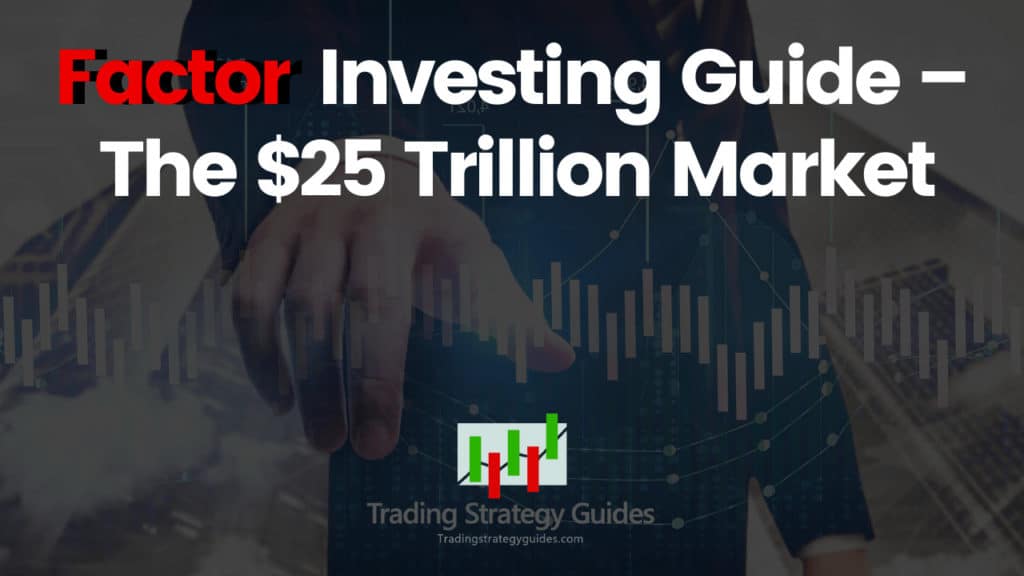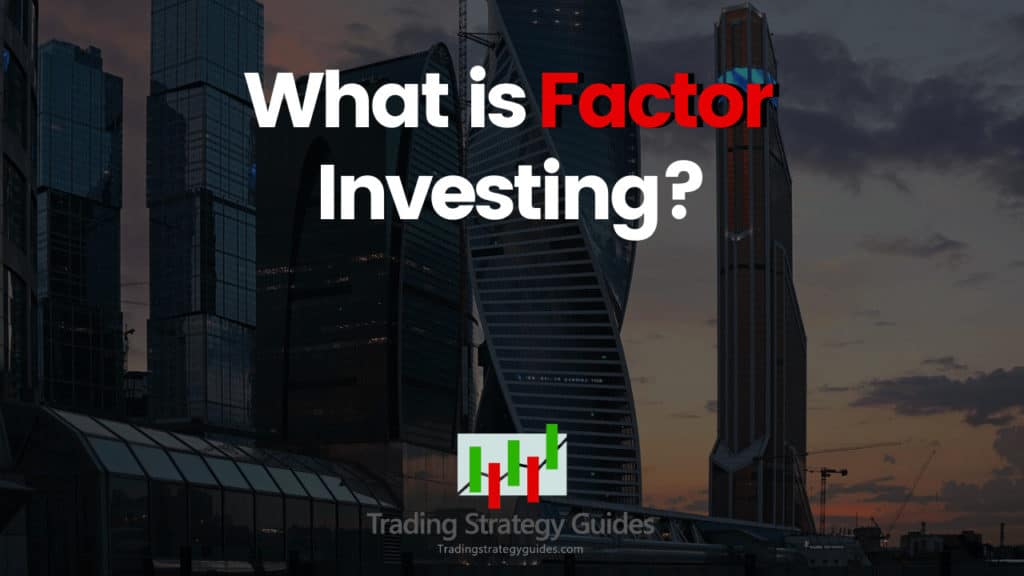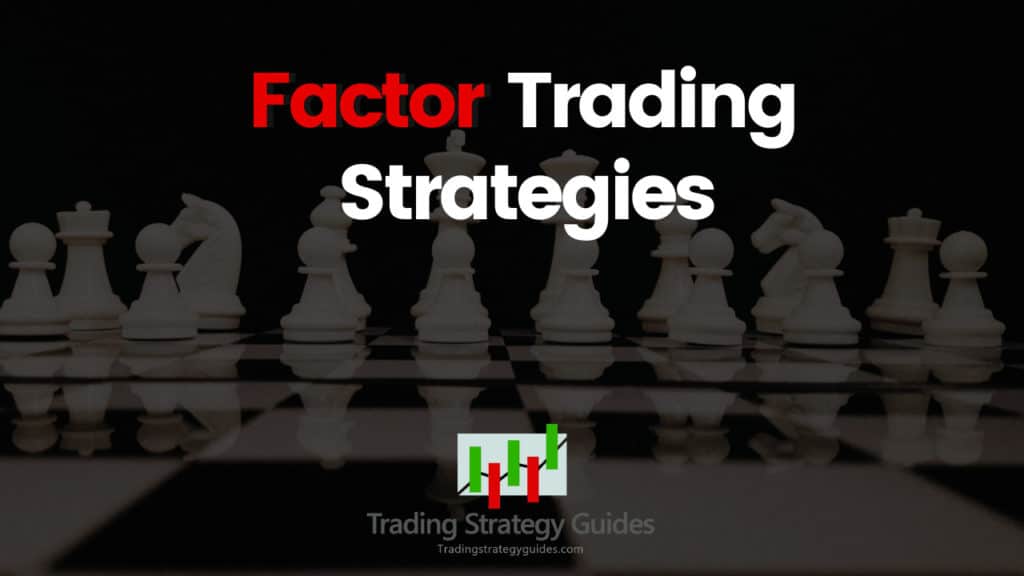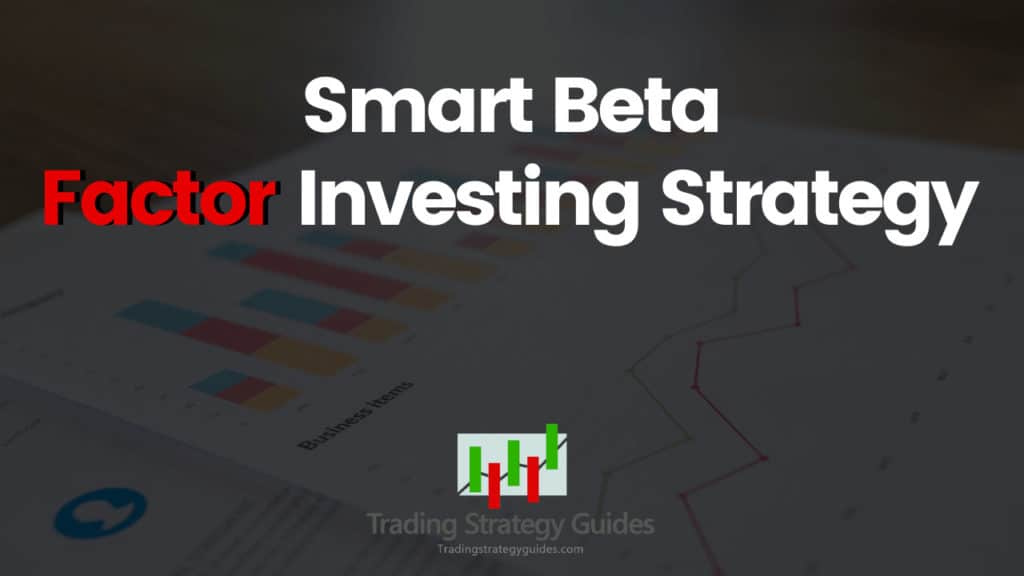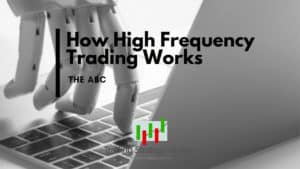Factor Investing Guide – The $25 Trillion Market
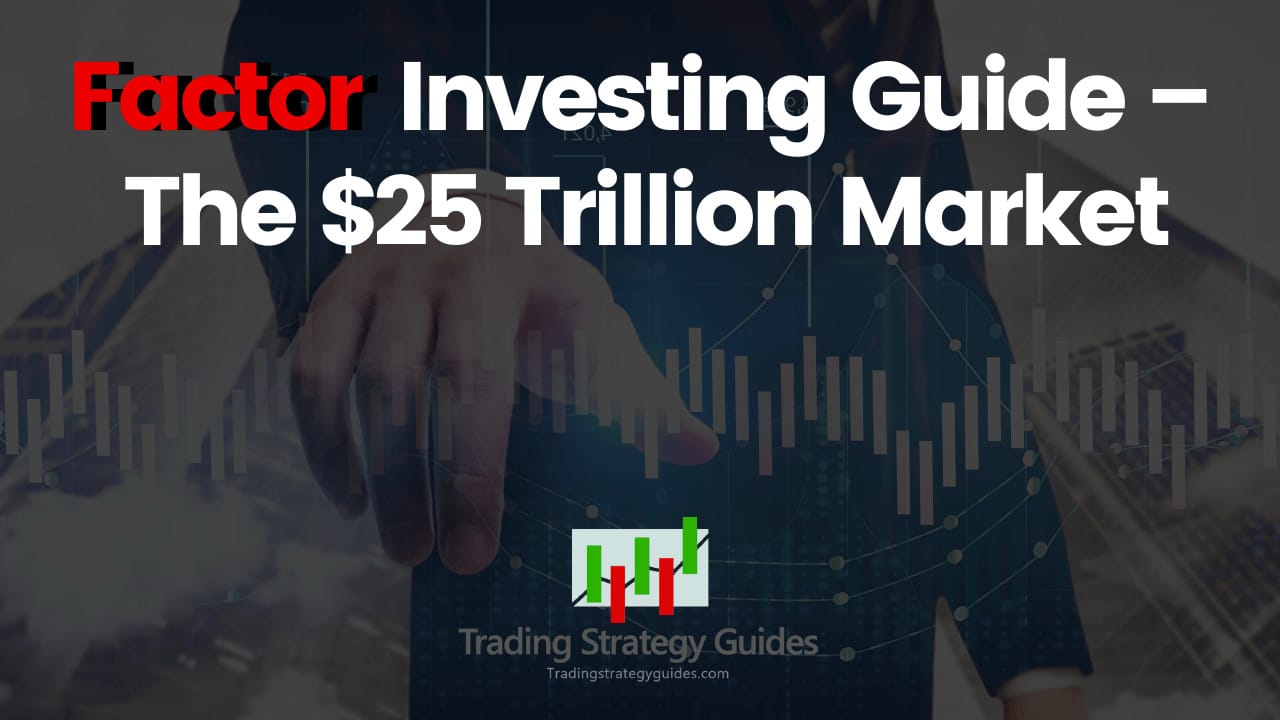
The new hot thing on Wall Street that investors are adopting in droves is factor investing. Factor trading strategies have boomed to $25 trillion in assets at the end of 2019. Factor trading combines the benefits of both active and passive investing. Throughout this guide, you’re going to learn why this portfolio management strategy is so loved by professional investors.
If this is your first time on our website, our team at Trading Strategy Guides welcomes you. Make sure you hit the subscribe button, so you get your Free Trading Strategy every week directly into your email box.
Investors on Wall Street generally have at their disposal two types of investment strategies, active investing and passive investing.
First off, we’re going to break down the concepts of active vs. passive investing.
Active investing is an investment strategy that seeks to beat the market by buying and selling stocks with a focus on short-term profits. On Wall Street, this is also referred to as trying to generate Alpha.
On the opposite side, there is passive investing.
Where passive investing is trying to capture market returns by having a buy-and-hold mentality. This portfolio strategy focuses on the long-term. On Wall Street, this is also referred to as Beta trading.
Check out our ultimate guide to Beta trading HERE.
Now, one of the best-kept secrets on Wall Street is that there is a third way of portfolio management called factor investing.
Factor investing is somewhat of a halfway house between active investing and passive investing.
So, are you ready to find out what is factor investing and how factor trading works?
Are you ready to beat the markets using some of the best factor trading strategies?
Let’s get started…
What is Factor Investing
Factor investing is an investment strategy that uses a systematic approach to invest in particular areas of the financial market that can generate higher returns. Factor trading focuses on long term trends. Read more about trend trading strategies here.
Hedge fund managers using a factor-based investing approach has been able to generate higher risk-adjusted returns.
On Wall Street, factor investing is also referred to as smart strategic or alternative beta.
The factor-based strategies were developed by two American academics, namely Nobel laureates Eugene Fama and Kenneth French in the 1990s.
The multi-factor model took the equity returns of stocks and divided them into small pieces.
By dividing the market into these small pieces and examining the returns of these different pieces, Eugene Fama and Kenneth French discovered that there have been higher returns among small firms and including value companies
Basically, factor trading is just a style of investing across asset classes.
An example is buying value, which is buying what’s cheap in stocks, bonds, commodities, and currencies.
The only drawback of factor trading is that there are over 600 factors that can affect the value of your investment. This can sometimes make factor trading rather complicated.
This raises the question:
How is an investor to know which of the 600 factors to weigh his investment decision?
In the book “Your Complete Guide to Facto-based Investing” Andrew Berkin and Larry Swedroe uncovered the secret of multi-factor investing.
The book revealed there are a number of relevant criteria if you want to design optimal portfolios. A total of 8 critical factors are needed for successful factor investing, including:
- Market Beta (Check out what is Beta in trading HERE)
- Size – meaning small-cap stocks tends to outperform over the long term.
- Value stocks (Check the best growth stock investing strategy HERE)
- Momentum stocks – stocks that are performing well in the short term.
- Profitability
- Quality stocks – high-quality stocks outperform low-quality stocks in the long run
- Term
- Carry trade (Best Carry Trade Strategy – The $14 Trillion Trade)
While these are the building blocks of value investing, we can trim down the factors even further.
The potential for long term outperformance can be achieved by focusing on only three factors:
- Value stocks are low priced stocks relative to their intrinsic value. Over time, value stocks tend to outperform more expensive stocks
- Momentum – stocks that have a strong performance in the short-term
- Quality stocks are well-established companies that have strong earnings and balance sheets.
If you’re looking for an example of factor investing we have your back.
Let’s see how factor trading works by going through an example.
Let’s dive in.
How Factor Trading Works
Here, we’re going to outline the science of multi-factor investing and the portfolio construction process.
As a starting point, we’re going to use the equity market.
What happens from here when adopting the factor investing approach?
The first step is to identify and filter out the most volatile stocks.
Why is that?
We want to focus on low-volatility investing, which is one of the building blocks of factor investing.
This will reduce our investment universe and will draw volatility in line with the broader market.
The second step is to withhold only those stocks that score positively on all 3 factors (value, momentum, and quality). When these three factors overlap with the same stocks, we can have a nucleus of stocks to include in our portfolio.
Chek out our guide on options trading strategies!
Allocating funds to factors such as value, momentum, and quality can help us minimize risk and at the same time increase returns.
Now, you’re probably wondering if factor investing works.
The answer to that question will be outlined below:
Why Factor Investing Still Works
The growing interest in factor-based investing is not just a temporary trend. Although factor trading has become popular only in the last 10 years, it will continue to work for two primary reasons:
- Academic research that endorses the profitability of factor trading strategies.
- More empirical data is put into practice.
A multi-factor portfolio allocation will continue to generate positive performance in the future as long as the construction of the portfolio is based on reliable factors.
Factor investing remains a superior way of investment strategy that will continue to work.
Now, with these investing principles, you can develop factor trading strategies that once were only available for big institutions.
Let’s get started.
Factor Trading Strategies
Investment portfolios can be constructed and diversified based on the DNA that is hidden inside the stocks, instead of the stocks themselves. And, here is where the factor trading strategies are useful.
Now, let’s see how to apply these concepts into practice.
The first thing we’re going to do is to apply momentum strategies to a factor-based portfolio.
See below:
Momentum Factor Investing Strategy
In this section, we’re going to show you how to construct a factor-based portfolio using momentum strategies.
You might be wondering:
What is momentum factor investing?
To better understand this concept, let’s break down and define each term individually.
First, momentum refers to the stock price disposition to continue moving in the same direction as the prevailing momentum. For example, if the stock price has been moving up relative to the rest of the market over the past few days, weeks or months, it’s more likely to continue going up versus the rest of the market for the next few days, weeks or months.
A momentum factor strategy is designed to profit from this tendency of short-term momentum.
So, momentum factor investing aims to:
- Buy stocks that have been outperforming under the expectation that over the short run they’ll continue to outperform the rest of the market
- Sell stocks that have underperforming over the short run under the expectation that they will continue to underperform
A word of caution…
Momentum factor investing requires considerable trading skills and effective market timing techniques.
Why is that?
You’re trying to go in the same direction as all the other market participants. And, without proper stock timing, it can eat up most of the return opportunity.
Now, buying a stock because it has gone up a lot in price is not the only way to profit from momentum.
For example, a value investor can improve the timing of their trading. A stock that is too expensive and you’re inclined to sell it out of your portfolio, but it has very strong momentum. In this situation, it can make more sense to wait until the momentum is fading before you eliminate that overvalued stock from your portfolio.
On the other side, if a stock is very cheap and looks like a good addition to a value portfolio but it has strong negative momentum, it’s better to delay that trade until that strong negative momentum has faded away.
Next…
We’re going to focus on the beta factor investing.
See below:
Smart Beta Factor Investing Strategy
First, let’s explain what market beta is.
Let’s assume your portfolio beta is 1.5.
For example, if the market moves up by 10% than your portfolio would be up 15%.
So, the beta is a measurement of how correlated you are with the market returns. If, for example, the market moves down by 20%, your portfolio will be down 30% (20% x 1.5).
The beta factor can also measure your stock return versus other asset classes.
If you buy stocks over the long term, they have a higher return than bonds. The beta factor is trying to explain that if you invest in the stock market versus if you invest in let’s say, for example, bonds the portfolio with the stocks will be higher than the returns from the bonds by 8.3% per year.
While this is an impressive beta factor, there is no free lunch in investing.
Final Words – Factor Investing
In summary, factor investing is expected to deliver higher returns, but not without assuming a higher risk. Nowadays, factor trading has become popular among hedge fund managers, but this trading style might not be suitable for everyone. Also, be sure to read this article on the best hedge fund trading strategies.
When deciding how to invest the most important factor to consider is whether or not the factor trading strategies suit your personality. If you’re a serious investor the evidence shows that the best approach is a combination of passive investing and factor investing, which is also known as evidence-based investing.
When you combine these two very powerful portfolio management strategies, you increase the probability of having a successful investment experience. Check out this guide on ETF trading strategies.
Thank you for reading!
Feel free to leave any comments below, we do read them all and will respond.
Also, please give this strategy a 5 star if you enjoyed it!
[ratings]


